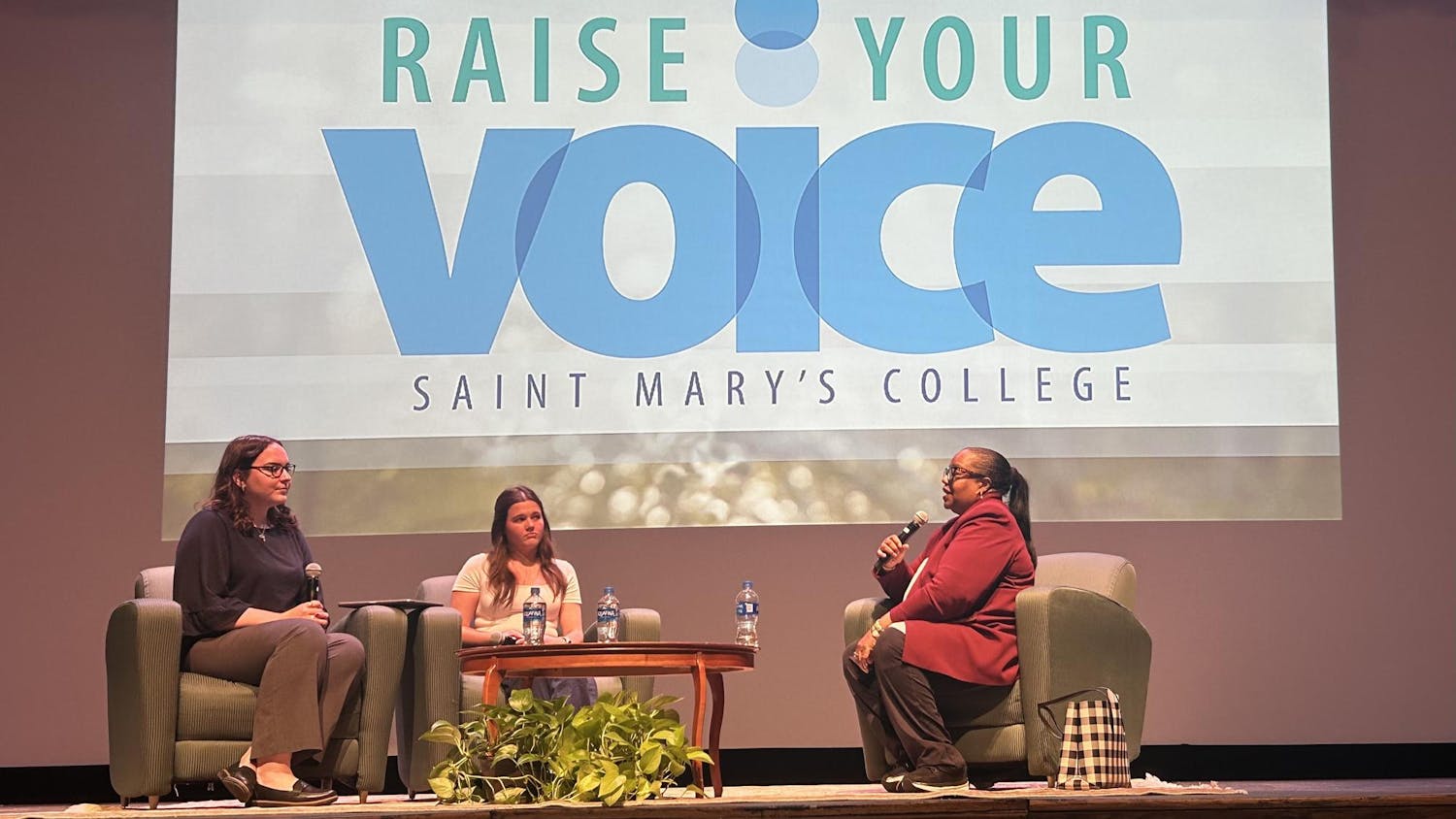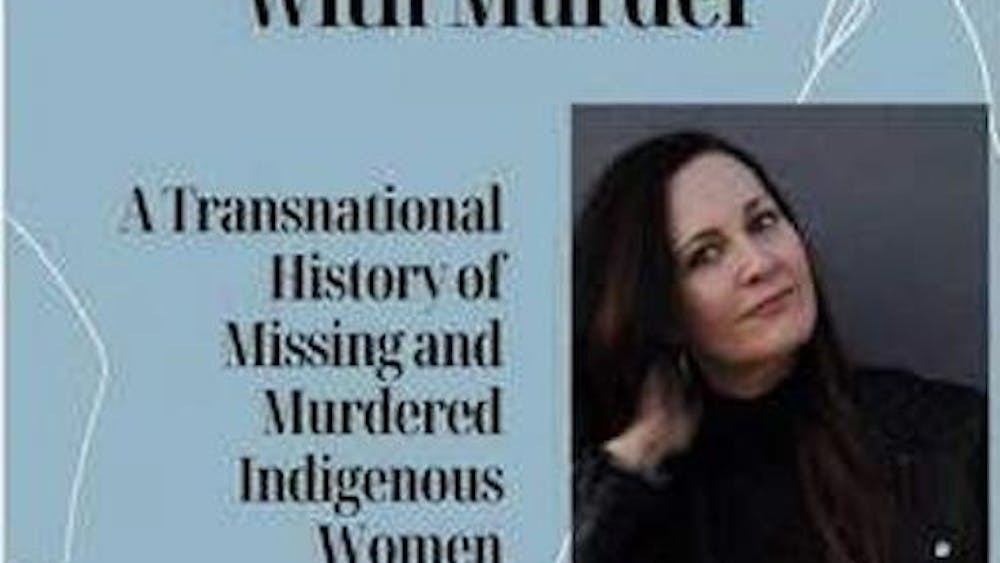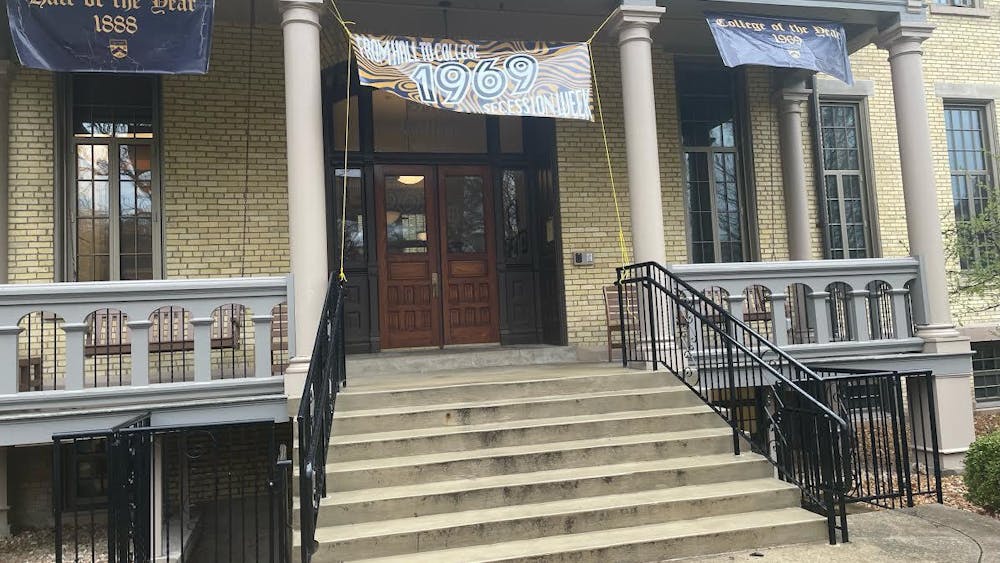Hidden away in Riley Hall, eight senior design and art studio majors are in the progress of completing their thesis projects for their Bachelor's of Fine Arts (BFA) degree.
The BFA degree differs from the Bachelor's of Arts degree due to the amount of time required for studio art, according to the Art, Art History and Design website. Though paint, photography and programming compose an expected mix of media, many of this year's seniors decided to integrate technology into their theses as well.

Senior Ryan Geraghty, an industrial design major, delved into the world of audio technology to develop his senior thesis, titled "HUSH."
"HUSH stands for Honed Ultra Sonic Harmonies," Geraghty said. "Essentially, I'm making a cone of silence."
Geraghty said the original focus of his project was to help people fall asleep.
"I dealt with insomnia in high school, so that was important to me," he said. "Later, when I interned through ISSLP in Nepal with the Fair Trade Company, I was exposed to Tibetan singing bowls. They create a powerful noise that immediately relaxes you. It was then that I realized how little we know about sleep."
Geraghty researched the topic further and found noise pollution to be a major factor in relaxation and focus.
"By 5 years old, we learn to tune things out," he said. "This actually inhibits the amount of processing you can do. Silence is important."

Geraghty decided to combine parametric speakers, ultrasonic frequencies and noise masking to create his own white noise.
"Instead of sound going all directions, these cause them to become muted or directed into a beam," he said. "With HUSH, you point it at yourself and everything gets muffled."
Though the initial idea was meant to address sleep issues, the project would be most applicable in the work place, he said.
Geraghty said HUSH would be useful for a library in an urban environment.
While Geraghty focused on the combination of audio and art, senior Amanda Carter decided to work with visual media.
Carter, a graphic design and German double major, decided to create a children's video game. The game, "Stray," focused on a sheep that walked with two legs instead of four and was designed to discourage bullying among younger children, she said.
"The sheep realizes along the way that his boring four-legged sheep friends actually have their own unique skills that help him solve puzzles and rescue other sheep," Carter said. "Children can empathize with someone who is different and realize these differences are what make each of use a unique and contributing member of a community."
Carter said the interactive world of video games was the perfect way to reach her target audience. She worked with two software developers, Notre Dame senior Brian Rockwell and Duke University senior Daniel Koverman, to make the game a reality.
"We don't have a game development program here, but the fundamentals I learned in various programming and interactive design classes gave me a head start," Carter said. "Through this project, I'm learning how to work together with programmers and how to adapt my graphics to an interactive environment."
Nicholas Gunty, a painting major, also used visual technology as the foundation of his senior thesis. His paintings highlight the dynamic between photography and painting in photo-realistic renderings of light, he said.
"It's a matter of dichotomies ⎯ the dualistic characteristics of photography and painting, but also of light," he said. "We often see light as an instant, but it's temporal and can be also somewhat linear with long exposures in photography."
Gunty said he thought of the idea one night while photographing cars traveling up a hill in Toledo, Spain, while studying abroad.
"I looked at the LCD screen and thought it would be a cool painting," he said. "It was then that I began to flesh it out and figure out where it could go."
Gunty said crafting a thesis is difficult, especially in art, because the further a student progressed, the more narrow the scope of the project became. The positive aspect however, was a more coherent, articulate image. This image was essential to communicating the artist's message through visual media, he said.
"One thing in the back of my mind as an art student has been that there is a lot of value in studying images and visual rhetoric that's important to human culture," he said. "In this thesis, and as a senior, the lessons have become much more evident."
The seniors' theses will be displayed in the Snite Museum this spring. Geraghty, Carter and Gunty said they would encourage others to visit the exhibit.
"We put a lot of work into these, so I'd tell everyone to go check them out," Geraghty said. "You can see some really interesting things there."












